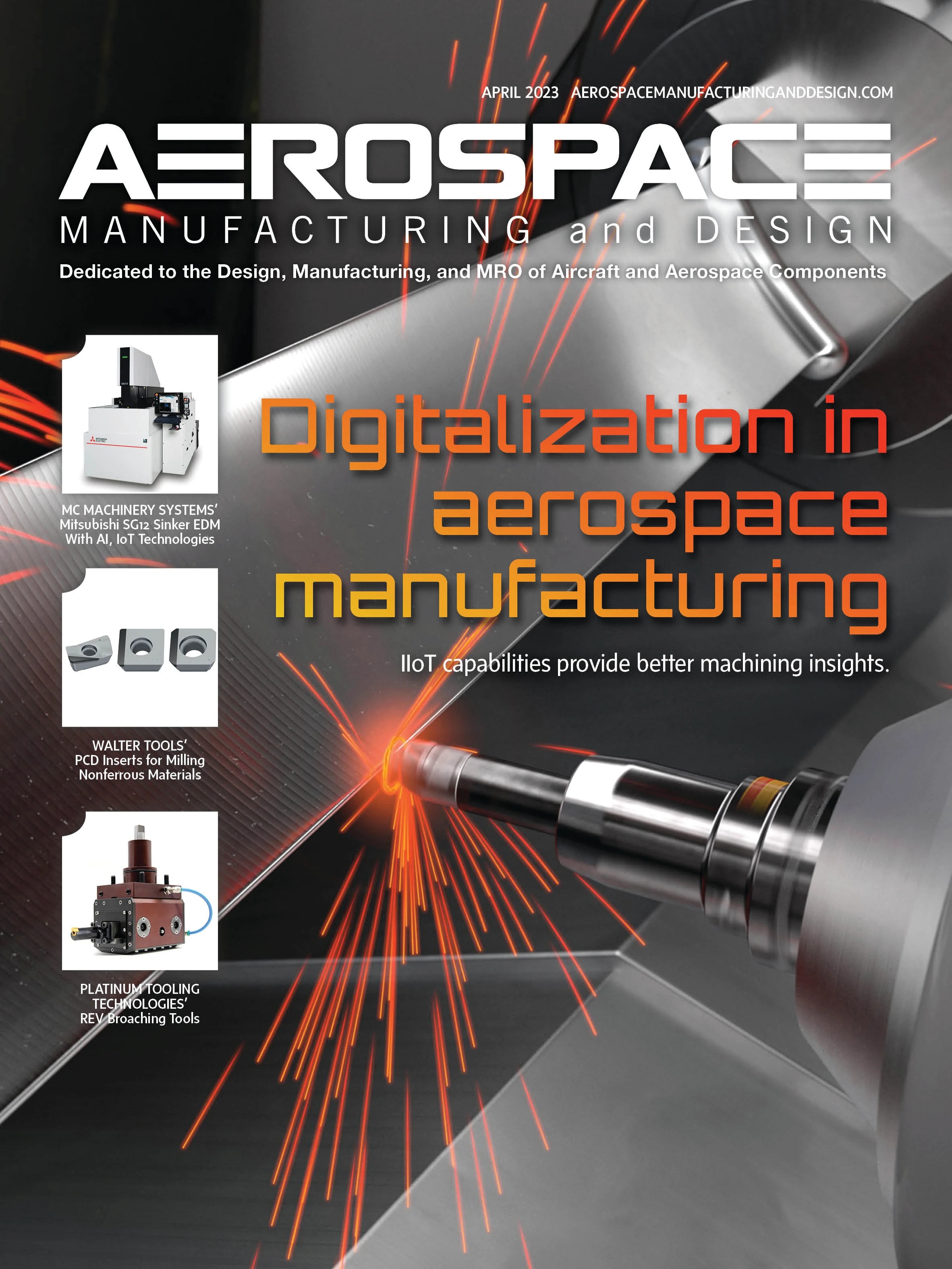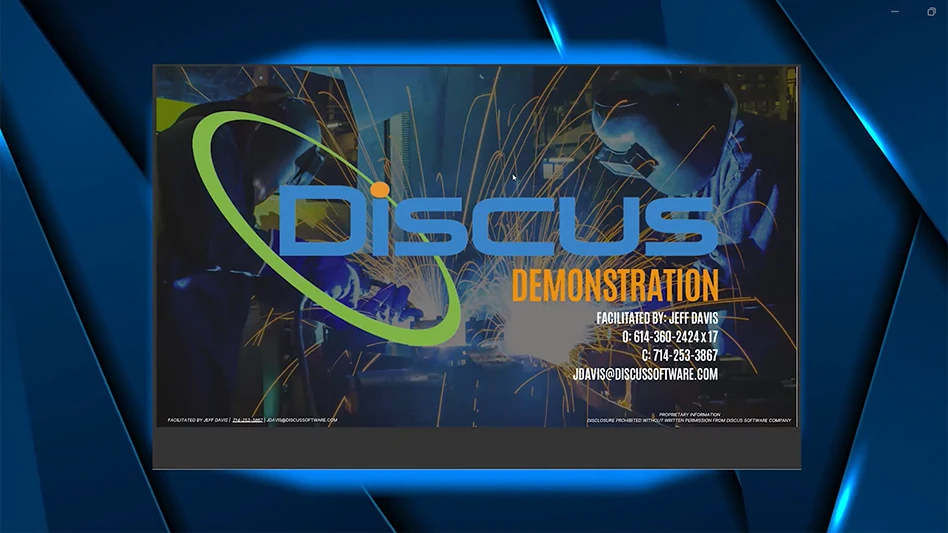
PHOTO COURTESY TRINITY PRECISION

Integrity and experience. Consistent performance. Clarity of purpose. These are words to live and work by, no matter your vocation. They’re also the guiding philosophies behind Trinity Precision Inc.’s motto, “People, Process, Principle,” and ever since founders David May, Steve Ford, Dave Tice, and Chris VanNover opened in 2014, they’ve stood by them.
“When we started Trinity, it was important that we establish the foundations needed to assure success for the company and its employees,” says VanNover, Trinity Precision’s vice president of operations. “One of these was the use of robust programming technology, which includes accurate, productive toolpath simulation. Vericut has filled that role since day one.”
No other option
CNC Programming Manager Merritt Stuever has been there for five years. Like VanNover and the rest of the company’s management team, he also has great respect for Vericut – including his time at Trinity Precision, he’s been using the product for nearly two decades. “After running a program through Vericut, you’re not only assured the G-code is consistent with a good part, but you also eliminate any chance of a crash,” he says. “Considering the cost of replacing a spindle and the machine downtime that comes with it, it’s a simple choice. Vericut’s a no-brainer.”
To say that Trinity Precision is heavily into aerospace work is an understatement. Its customer list includes Boeing Commercial and Defense, Northrop Grumman, Gulfstream, Textron Aviation, and others: original equipment manufacturers (OEMs) with zero tolerance for deviation in part quality or missed deliveries. Strict adherence to established processes is critical, which helps explain Trinity’s early focus on “the three Ps” in its logo, along with its reliance on sound programming procedures.

VanNover explains that Trinity Precision president David May purchased an existing mom-and-pop machine shop as a starting point for the new business. The previous owners were using a well-known brand of CAM software and had a single seat of CATIA from Dassault Systèmes that was gathering dust. May and his management team hit the reset button.
Starting from scratch
“We knew from previous experience that implementing change once you’ve reached a certain size can be difficult, so we took the opportunity early on to build everything from the ground up,” he says. “We stayed with CATIA because that’s what most of our customers require and invested in Vericut. It does everything we need it to do, and as we were looking forward to a lot of new CNC equipment, we like that we can develop our own machine tool models. It gives us a lot of flexibility.”
Now, Trinity Precision boasts 32,000ft2 of manufacturing space and a fleet of advanced CNC machines. It’s also enjoyed a four-fold revenue increase since those early days. VanNover notes the pandemic-related slowdown in commercial aviation gave them a pretty significant haircut but that tide appears to be turning, and Trinity’s 70+ employees stand ready for future growth.
However, that growth depends on robust processes, which Stuever and the rest of the engineering team spend their days developing. Every CNC machine tool has a standard tool list, greatly reducing setup time and eliminating the chance that an operator will place a cutter in the wrong position.

In addition, all feedrates, cutting speeds, and other machining parameters are similarly standardized within CATIA. Offline presetting is used, and many of the machine tools employ tool breakage detection for automated operation. Additionally, every job goes through Vericut before leaving the programming office, a requirement that Stuever notes has saved the company countless hours of rework and scrap.
Simulation, no exceptions
“We’re mostly a high-mix, low-volume shop, so oftentimes we might have a couple of dozen new part numbers in a week,” Stuever says. “Since none of us can read and visualize hundreds of thousands of lines of G-code, Vericut is the best way to check for interference, gouging, leftover material, and any of the other everyday programming scenarios that can lead to a bad part. Since you know the software will catch those things, it makes programming easier and faster.”
Stuever’s also quite pleased with CGTech’s support level. He’s taken several classes and attended multiple Vericut Users’ Exchange (VUE) sessions, so, he’s come to know many of the people in the software developer’s Irvine, California headquarters. “They’re very helpful and always take the time to make sure any issues or needs are resolved,” he adds. “As far as technical support goes, there are only two companies I rank extremely high. CGTech’s one of them.”

VanNover offered similarly high praise. “The rest of the management team and I have worked in shops where machinists were out there changing programs, selecting their own tools, and pretty much doing their own thing, but you just can’t operate like that anymore, especially with the available labor force. This is why we’ve taken most of that responsibility and put it in the programmer’s camp, making it critical that you have the right software tools. And so even from the very start, this was a non-negotiable aspect of our desire to lay the right foundation; Vericut is a big part of that foundation.”
CGTechEASTEC Booth #5459
Trinity Precision
Get curated news on YOUR industry.
Enter your email to receive our newsletters.
Explore the April 2023 Issue
Check out more from this issue and find your next story to read.
Latest from Aerospace Manufacturing and Design
- Beyond Aero refines its hydrogen-electric light jet
- Americase's advanced protective solutions
- Social media - what are your thoughts
- GE Aerospace secures Air Force engine contract
- Thomson Industries' online sizing and selection tool
- #53 - Manufacturing Matters - 2024 Leaders in Manufacturing Roundtable
- Join us for insights on one of the hottest topics in manufacturing!
- You can still register for March’s Manufacturing Lunch + Learn!






